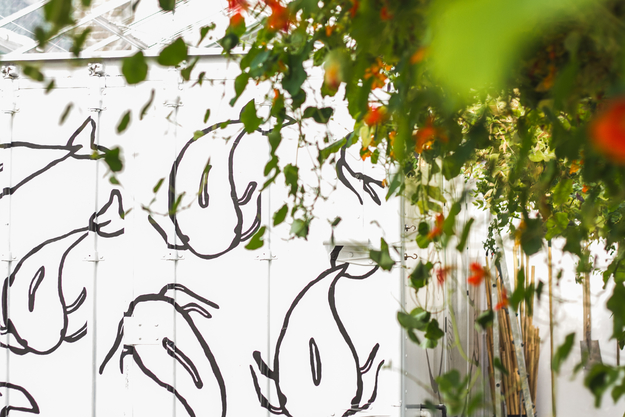10:00 am
When the coffee cups have nothing but a scoop of milk foam left, then it is time for the morning meal of the fish. The heavy door of the container creaks open and daylight casts upon the five fish tanks of a 1000 litres each. The inhabitants are at different life stages with the smallest ones being in the fifth fish tank - average weight 110 grams. They are also the largest population - a whopping 480 little fish. In the other four tanks the sizes vary - from 1100 to 2000 grams and, of course, they are much less in number - between 24 and 65.
The wide mouths adorned with long barbels cut through the water surface in anticipation. Catfish are opportunistic feeders and can easily switch from one feeding mode to another - they can feast on both living and dead matter (from phytoplancton to plants to other fish) and they can feed at the bottom as well as at the water surface. We feed them with floating fish food in order to monitor their feeding behavior - how much they eat, how fast and how enthusiastic they are.
The winter season has brought about some signifficant changes in the routine. Since the temperatures have dropped to around 5°C, the natural processes of feeding and decomposing have slowed down. The bacteria in our growbeds are working at a lower pace and the fish's appetite has decreased to zero. To counter the effects of the cold we have installed heaters in the tanks to keep the water mildly warm - around 22°C. That ensures that the fish consume and metabolize the food.
10:15 am
The pH in the fish tanks is a measure we keep track of daily. Even though African catfish can easily snatch the first price for hardiness (they are the cockroaches of swampy lakes) it is still very important to measure the pH because it indicates problems in the system e.g. if the excrements are not filtered out well or if there is a dead fish in the tank. Should the level drop below 6.00 we add Ca and K.
11:00 am
Two pumps in the sump tank are the never-resting labourers in the greenhouse and keep the water circulating in the system. They are equipped with cylindrical filters and nets to keep the invasive New Zealand mud snails(we're almost certain that is the species) and the large poo particles out of the pipes. However, those protective covers still need to be cleaned often, to allow the water to flow through. A good spray with the garden hoze does wonders in this case.
02:00 pm
Carrying out a water test is an occasional treat - it is done ideally once a week. We take water from one of the fish tanks and also from the big blue poo filter and measure the concentration of amonia, nitrites, nitrates, K, Ca, PO4 and Fe. It is a good way to monitor how healthy the system is.
05:00 pm
Time for dinner. At this time of year the days are short, hence the use of a torchlight is highly recomended. After each tanks has had its portions, we have a simple but effective system to mark that the fish have been fed - we have lists placed on each container that should be filled out after every meal.
While on the topic of food - we are also researching if it is possible to feed the African catfish with rats. Yes, rats. On one hand it provides a nutritional snack for the fish and on the other - manage pests in and around the greenhouse. Two birds with one stone. However, it is still uncertain if the rats carry any diseases that can be a health hazard for the fish and consequently to the people who consume them.
Sources: http://www.africancatfish.com/
http://www.fishbase.org/summary/clarias-gariepinus.html
